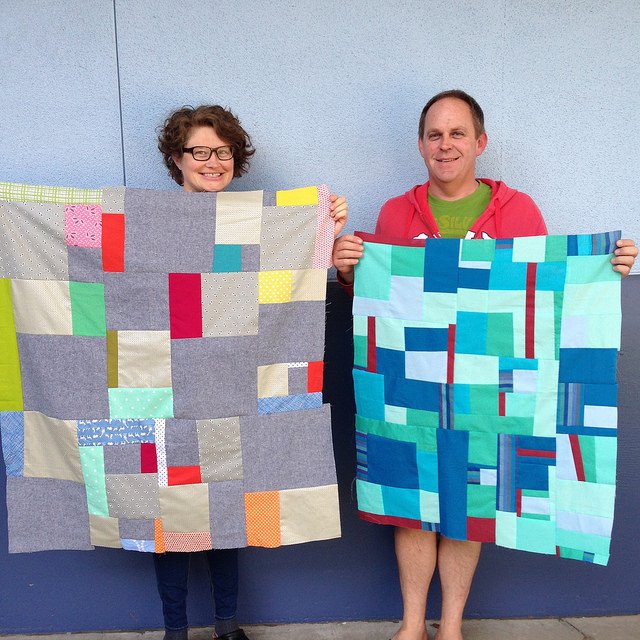Score For Floating Squares
1-Day 6hrs / Beginner & All Levels
Experience the freedom and joy of creative flow while learning basic ruler-free piecing techniques. Learn how to set and implement algorithms or procedures that allow you to improvise without overthinking. The Score For Floating Squares featured in The Improv Handbook For Modern Quilters is a great place to start for those new to improv quilting, more experienced improvisers will push the basic score through variations in scale.
How does it feel to work big and take up space, or to explore the intimacy of tiny-small? What conversation takes place when different scales interact in the same quilt? —Sherri Lynn Wood
Skills & Techniques
Basic ruler free piecing technique
Darting on and across the seam when patchwork bubbles
Order of sewing / utilizing filler to equalize different size squares or sections
Learn how to set limits and implement procedures or algorithms to cultivate flow, freedom and spontaneity
Experience the joy of improvising without overthinking
Color substitutions and shifts
Working with value
Working with scale
Materials
There are no set amounts for materials. Keep in mind your target size, your natural pace and preferred scale to determine amounts. We will be sewing for at least five hours. The quilt can be any size and any scale you choose to work at.
Bring a distinctive “filler” fabric. Fat quarter or more yardage. This is not something you want to be scrappy, and it should be clearly distinctive from the materials you use for your squares.
Bring material to cut squares of various sizes. Scraps will work for this. Or you can bring yardage in at least two color ways for your squares.
Whatever you decide to bring, make sure you have enough fabric/color choices to inspire your curiosity and creativity.
For more experienced improvisers and beginners who are up for the challenge, you will be encouraged to explore the limits of scale and may need larger amounts for cutting large blocks of fabric.
If you run out of a particular fabric, no worries, it’s an opportunity to make a substitution.
Sustainable sewing practices such as shopping your stash and utilizing found materials is encouraged. Note on washing: If my intention is to wash a quilt made from up-cycled materials, I pre-wash and dry all my materials as I would the finished quilt.
It’s improv! You will learn something no matter what materials you decide to work with.
Note on washing: If my intention is to wash a quilt made from up-cycled materials, I pre-wash all my materials, if they haven’t been washed recently.
Tools & Supplies
Large cloth scissors – make sure they are sharp
Rotary cutter and cutting mat – no ruler necessary
Seam ripper
Pins
Tailors chalk or marking tool
Sewing machine
Ironing station
Student Work / Quilt by Maureen Garner
Student Work / Los Angeles MQG
Student Work / Los Angeles MQG






